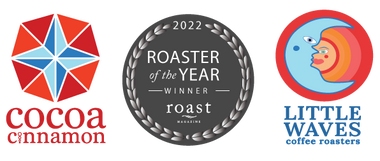
Coffee FAQ
Q: Do you offer Fair Trade or Certified Organic coffees?
A: This is an important question that deserves a thorough answer. Though we don’t prioritize purchasing certification coffees, we do pursue the values behind them by emphasizing ongoing transparency and pursuit of quality with every partner. We seek to grow and maintain relationships that benefit all life in the custody chain - from the producer to the land to employees to you. Though certifications have some benefits, like creating market awareness, they are patchwork in that no certification covers every value, they are expensive for all in the custody chain, and don’t necessarily create the change we seek. We believe in paying producers about 4 times over commodity prices and almost 3 times as much as Fair Trade.
Organic farming is hard, necessary work, but the fees associated for producers and roasters can be prohibitive and occasionally unrealistic given the risk and difficulty of agriculture. We source coffees from family-owned farms, from people who are proud of the land, air, and water around them and strive to take care of it.
Q: What impacts caffeine content in a cup of coffee?
A: It is important to manage your caffeine intake as most medical professionals agree that about 5 x 8 fl oz cups of caffeinated coffee per day is healthy for many individuals.
In terms of brewing method, a double espresso and an 8 fl oz drip coffee have about the same amount of caffeine. The outlier is cold brew, which has more caffeine per serving due to its long steep time and stronger brewing ratio. In general, if you strengthen brew strength or elongate brew time, the caffeine content of your coffee will increase.
A given coffee’s genetics and terroir impacts caffeine content. We typically buy Coffea arabica varieties, which have an average amount of caffeine and better flavor overall, compared to the more pest resistant coffee species called Coffea canephora. Canephora or Robusta as it is more commonly known, contains more caffeine, but usually doesn’t taste very good.
Roasting does not have a significant effect on caffeine content directly, though roast level may play a part in determining how strong you prefer your coffee brewing ratio to be.
Q: How should I choose a coffee?
A: Given that Little Waves roasts to balance, sweetness, and fullness of flavor, we encourage your enjoyment of any of our coffees on any brew method.
Your best bet is thinking about the flavors you enjoy in coffee, then choosing an offering that reflects your preferred gustatory experience.
Q: What do I need to get the most out of my coffee?
A: The most important aspect is the coffee beans you use - they should be reasonably fresh (3 days - 4 weeks off-roast ideally) and well-stored.
Fresh tap water filtered through a basic carbon filter (like a Brita pitcher) is a must. Water that smells like chlorine or off-aromas, or is too “heavy” or distilled won’t produce a very good cup of coffee. If the water coming out of your tap is too heavy (maybe you live in the desert?), you might consider an RO water filtration system.
We also recommend investing in a quality burr grinder (with reasonably sharp burrs) to ensure a consistently even grind size.
Q: How should I store my coffee?
A: Coffee beans stale more quickly when exposed to heat, light, moisture, and oxygen. The best way to avoid these staling factors is to keep your well-sealed Little Waves bag in a dark, slightly cooler than room temperature place like a pantry or cupboard. Little Waves bags are resealable, which we highly encourage after each use.
Though the refrigerator is cool in temperature, we do not recommend it for storage as humidity levels tend to fluctuate and off-aromas are rampant. Between taking the coffee out of the fridge and putting it back in, as well as humidity changes from opening the door and internal defrosting cycles, your coffee will age quickly.
The freezer is an interesting option, but there is a catch. If you store coffee beans in an airtight container in the freezer, their flavor freezes in time and will taste basically the same when you take them out. The catch is that if you freeze coffee, then take it out, then refreeze it, the coffee’s cell walls break down due to the formation of ice crystals. This results in quick flavor degradation upon removal from the freezer. Interestingly, you can grind and brew coffee beans right out of the freezer. They will actually grind up more evenly in this frozen state than at room temperature! You may want to raise your water temperature to compensate however.
Q: Why does grind size matter? Do different brew methods need different grind sizes?
Yes, grind size matters. The core idea is that finer grinds extract more quickly and will therefore taste bitter more quickly. Coarser grinds extract slower and as a result, will take longer to get out of the sour stage. Extraction always happens in order: sour flavors first, sweet second, and bitter third. If your brew tastes sour, fine up one or more notches. If your brew tastes bitter, coarsen up one or more notches.
Very Fine like a Powdered Sugar for Espresso + Ibrik
Fine like Soft Sand for Moka Pot (Stovetop Espresso)
Fine-Medium like Fine Sand for Aeropress
Medium-Fine like Table Salt for Cone-shaped Pour Overs (Hario V60)
Medium like Beach Sand for Flat + Wedge-shaped Pour Overs (Kalita Wave)
Medium-Coarse like Rough Sand for Auto-Drippers
Coarse like Sea Salt for Cold Brew
Very Coarse like Kosher Salt for French Press
